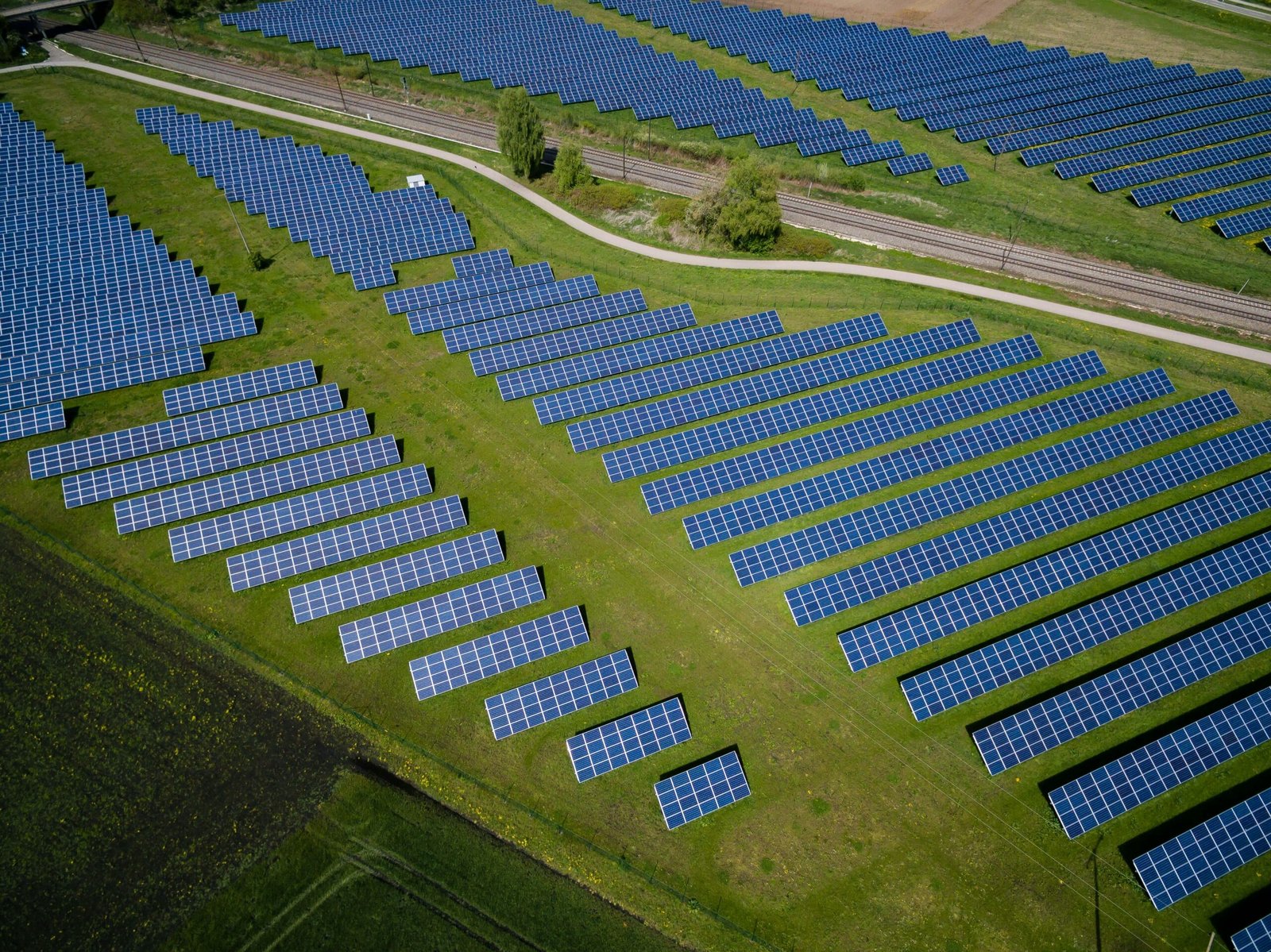As the world grapples with the urgent need to address climate change and reduce greenhouse gas emissions, the transition to renewable energy has gained momentum. Governments, businesses, and individuals are increasingly recognizing the environmental and economic benefits of renewable energy, leading to a surge in its adoption worldwide.
Solar energy, in particular, has experienced remarkable growth in recent years. The falling costs of solar panels, coupled with technological advancements in photovoltaic cells, have made solar power more accessible and affordable than ever before. This has resulted in a proliferation of solar farms and rooftop solar installations in both developed and developing countries. In fact, solar energy has become one of the fastest-growing sources of electricity generation globally, contributing significantly to the shift away from fossil fuels.
Similarly, wind energy has emerged as a major player in the renewable energy sector. Advances in wind turbine technology have made wind power more efficient and cost-effective, making it an attractive option for electricity generation. Offshore wind farms, in particular, have gained popularity due to their ability to harness strong and consistent winds, providing a reliable source of clean energy. With ongoing research and development efforts, it is expected that wind energy will continue to expand its share in the global energy mix.
Hydroelectric power, a long-established source of renewable energy, continues to play a crucial role in the transition away from fossil fuels. The construction of large-scale hydroelectric dams has allowed countries to harness the power of flowing water to generate electricity on a massive scale. Additionally, small-scale hydroelectric systems, such as run-of-river projects, have gained traction in remote areas where access to traditional power grids is limited. The versatility and reliability of hydroelectric power make it an essential component of the renewable energy mix.
While the rise of renewable energy is undoubtedly a positive development, challenges still remain. The intermittent nature of solar and wind power, for example, requires the development of energy storage technologies to ensure a stable and reliable energy supply. Additionally, the transition to renewable energy must be accompanied by a commitment to energy efficiency and conservation to maximize the benefits of clean energy sources.
In conclusion, the global energy landscape is undergoing a transformative shift, with renewable energy sources surpassing fossil fuels as the primary source of energy. The advancements in solar, wind, and hydroelectric technologies, along with declining costs and increased investment, have propelled the growth of renewable energy. As the world continues to prioritize sustainability and combat climate change, the transition to renewable energy will play a pivotal role in creating a cleaner and more sustainable future.
Furthermore, the growing concern over energy security has also played a significant role in the rise of renewable energy. Traditional energy sources, such as coal and oil, are often imported from other countries, making them vulnerable to geopolitical tensions and price fluctuations. In contrast, renewable energy sources are typically domestic and can be harnessed locally, reducing dependence on foreign energy imports.
Moreover, the development of renewable energy technologies has created new job opportunities and stimulated economic growth. The renewable energy sector has become a major employer, providing jobs in manufacturing, installation, maintenance, and research and development. This has not only helped to reduce unemployment rates but has also contributed to local economic development.
Additionally, public awareness and concern about the environmental impacts of fossil fuels have led to increased demand for renewable energy. People are becoming more conscious of the need to reduce their carbon footprint and are actively seeking out cleaner and more sustainable energy alternatives. This shift in consumer preferences has further fueled the growth of the renewable energy industry.
Furthermore, government policies and regulations have played a crucial role in promoting the adoption of renewable energy. Many countries have implemented renewable energy targets and incentives to encourage the development and deployment of clean energy technologies. These policies include feed-in tariffs, tax credits, and renewable portfolio standards, which have created a favorable market environment for renewable energy investments.
In conclusion, the rise of renewable energy is driven by a combination of factors, including declining costs, increased investment, energy security concerns, job creation, consumer demand, and supportive government policies. As the world continues to grapple with the challenges of climate change and the need for sustainable development, the importance of renewable energy will only continue to grow.
Another key benefit of renewable energy is its potential for energy independence. As renewable energy sources are often abundant and widely available, countries can reduce their reliance on imported fossil fuels and instead harness their own natural resources. This not only strengthens national energy security but also reduces vulnerability to price fluctuations in the global energy market.
Renewable energy also offers a more sustainable and resilient energy system. Unlike finite fossil fuel reserves, renewable energy sources such as solar, wind, and hydroelectric power are renewable and virtually inexhaustible. This means that as long as the sun shines, the wind blows, and rivers flow, we will have a constant and reliable source of energy. This stability in energy supply can help mitigate the risks associated with energy scarcity and price volatility.
Moreover, the development and deployment of renewable energy technologies can stimulate economic growth and innovation. As governments and businesses invest in renewable energy infrastructure, research and development, and clean energy projects, they create new opportunities for technological advancements and market expansion. This not only drives job creation but also fosters a culture of innovation and entrepreneurship.
Additionally, renewable energy can have positive social impacts. By decentralizing energy production and promoting community-based renewable energy projects, local communities can have greater control over their energy sources and benefit from the economic opportunities associated with renewable energy. This can help revitalize rural areas, empower marginalized communities, and promote social equity.
In conclusion, the benefits of renewable energy are far-reaching and encompass environmental, economic, and social aspects. By transitioning to a renewable energy future, we can mitigate climate change, improve air quality, enhance energy security, create jobs, spur innovation, and promote social equity. The continued growth and development of renewable energy technologies are crucial for a sustainable and prosperous future.
One of the key reasons for the growing popularity of solar energy is its environmental benefits. Solar power is a clean and renewable source of energy that produces no greenhouse gas emissions during operation. This makes it an attractive alternative to fossil fuels, which are major contributors to climate change.
Moreover, solar energy helps to reduce dependence on finite fossil fuel resources, which are becoming increasingly scarce and expensive. As the demand for energy continues to rise, solar power offers a sustainable solution that can meet the growing needs of society without depleting natural resources.
In addition to its environmental and economic advantages, solar energy also has social benefits. The installation and maintenance of solar panels create jobs and stimulate local economies. This can be particularly beneficial in rural areas or regions with high unemployment rates.
Furthermore, solar energy can improve energy access and affordability, especially in developing countries. Many remote areas that are not connected to the traditional power grid can benefit from solar energy systems, providing them with access to electricity for the first time.
As the technology continues to improve and costs continue to decline, solar energy is becoming increasingly competitive with conventional forms of energy. In fact, in many regions, solar power is already the cheapest source of electricity.
Overall, the role of solar energy in the global energy mix is likely to continue expanding in the coming years. With its environmental, economic, and social benefits, solar power has the potential to transform the way we generate and consume energy, paving the way for a more sustainable and resilient future.
The Potential of Wind Energy
Wind energy is another rapidly growing source of renewable energy. Wind turbines convert the kinetic energy of the wind into electricity, providing a clean and renewable source of power.
Advancements in wind turbine technology, such as taller towers and larger rotor blades, have significantly increased the efficiency and capacity of wind energy systems. Additionally, the development of offshore wind farms has opened up new opportunities for harnessing wind energy in coastal areas.
Wind energy offers several advantages, including its abundance and scalability. Wind is a virtually limitless resource, and wind farms can be built in a variety of locations, both onshore and offshore. This makes wind energy a highly versatile and adaptable source of power.
Many countries have recognized the potential of wind energy and have invested heavily in wind power projects. Denmark, for example, generates a significant portion of its electricity from wind, while countries like the United Kingdom and Germany have also made significant strides in developing their wind energy sectors.
Furthermore, the environmental benefits of wind energy cannot be overstated. Wind power produces no greenhouse gas emissions or air pollutants during operation, making it a clean and sustainable alternative to fossil fuels. This not only helps to mitigate climate change but also improves air quality and reduces the health risks associated with traditional energy sources.
In addition to its environmental advantages, wind energy also has economic benefits. The wind industry has created numerous job opportunities, from manufacturing and installation to operation and maintenance of wind turbines. This has helped stimulate local economies and provide a boost to employment in many regions around the world.
Moreover, wind energy has the potential to enhance energy security by reducing dependence on imported fossil fuels. By harnessing the power of the wind, countries can reduce their reliance on foreign oil and gas, making their energy supply more self-sufficient and resilient to geopolitical disruptions.
Looking ahead, the potential of wind energy is immense. As technology continues to improve and costs decline, wind power is expected to play an increasingly significant role in the global energy mix. With ongoing research and development, there is also the possibility of integrating wind energy with other renewable sources, such as solar power, to create hybrid systems that maximize energy production and efficiency.
In conclusion, wind energy has emerged as a viable and sustainable solution to meet the world’s growing energy needs. Its abundance, scalability, environmental benefits, and economic advantages make it a compelling option for countries seeking to transition to a cleaner and more secure energy future.
Hydroelectric power plants play a crucial role in meeting the energy demands of countries around the world. With their ability to generate electricity consistently and store excess energy, they provide a reliable and flexible source of power. This is particularly important in regions where other renewable energy sources may be limited or unreliable.
One of the key advantages of hydroelectric power is its environmental sustainability. Unlike fossil fuels, which release harmful greenhouse gases and contribute to climate change, hydroelectric power is clean and emits no carbon dioxide during operation. This makes it a crucial tool in the fight against global warming and reducing the carbon footprint of energy production.
Additionally, hydroelectric power plants have a long lifespan and require minimal maintenance compared to other forms of energy generation. Once a dam is built, it can operate for decades, providing a stable source of electricity with relatively low operating costs. This makes it an economically viable option for many countries.
Moreover, hydroelectric power plants have the added benefit of creating reservoirs, which can be used for various purposes such as irrigation, drinking water supply, and recreational activities. These reservoirs not only support local communities but also contribute to the overall development of the region.
However, it is essential to consider the potential environmental impacts of hydroelectric power. The construction of dams can lead to the displacement of communities and the loss of natural habitats. It is crucial to implement proper environmental impact assessments and mitigation measures to minimize these effects and ensure the sustainable development of hydroelectric projects.
In conclusion, hydroelectric power plays a vital role in meeting the energy needs of countries worldwide. With its reliability, capacity for energy storage, and environmental sustainability, it offers a significant contribution to the transition to a cleaner and more sustainable energy future. By harnessing the power of flowing or falling water, hydroelectric power plants provide a reliable and flexible source of electricity, supporting economic development and improving the quality of life for communities around the world.
The Role of Innovation in the Future of Renewable Energy
One of the key drivers of the future of renewable energy is innovation. As technology continues to advance at an unprecedented pace, new and innovative solutions are being developed to address the challenges associated with renewable energy adoption.
One area of innovation that holds great promise is energy storage. Currently, one of the main limitations of renewable energy sources such as solar and wind is their intermittent nature. Energy storage technologies, such as advanced batteries and pumped hydro storage, are being developed to store excess energy generated during peak production periods and release it when demand is high. These advancements in energy storage will not only help overcome the intermittency issue but also enable a more reliable and stable supply of renewable energy.
Another area of innovation is the development of more efficient and cost-effective renewable energy technologies. For example, researchers are working on improving the efficiency of solar panels by developing new materials and designs that can capture a higher percentage of sunlight and convert it into electricity. Similarly, advancements in wind turbine technology are focused on increasing efficiency and reducing maintenance costs.
In addition to technological innovations, policy and financial innovations are also playing a crucial role in the future of renewable energy. Governments around the world are implementing supportive policies, such as feed-in tariffs and renewable portfolio standards, to incentivize the deployment of renewable energy projects. Financial innovations, such as green bonds and impact investing, are also providing new avenues for funding renewable energy projects.
Furthermore, the future of renewable energy is not limited to just solar and wind power. Innovations in other renewable energy sources, such as geothermal, tidal, and biomass, are also being explored. These alternative sources of renewable energy have the potential to further diversify the energy mix and provide additional sustainable options for meeting our energy needs.
Overall, the future of renewable energy is bright, thanks to the continued advancements in technology and the growing recognition of the need for a sustainable energy future. With innovation driving the development of more efficient and cost-effective renewable energy solutions, we can expect to see a significant transformation in the global energy landscape in the coming years.



































